Affiliate disclosure: This post may contain affiliate links. Please see our Privacy Policy.
Canning fruit is a simple way to preserve the fresh flavors of summer right on your pantry shelf. Most types of fruit are high in sugar and acid, making them perfect for water bath canning.
Sugar is optional, and not required for preservation (just for flavor and texture), so feel free to make any of these fruit canning recipes without sugar if that suits your tastes.
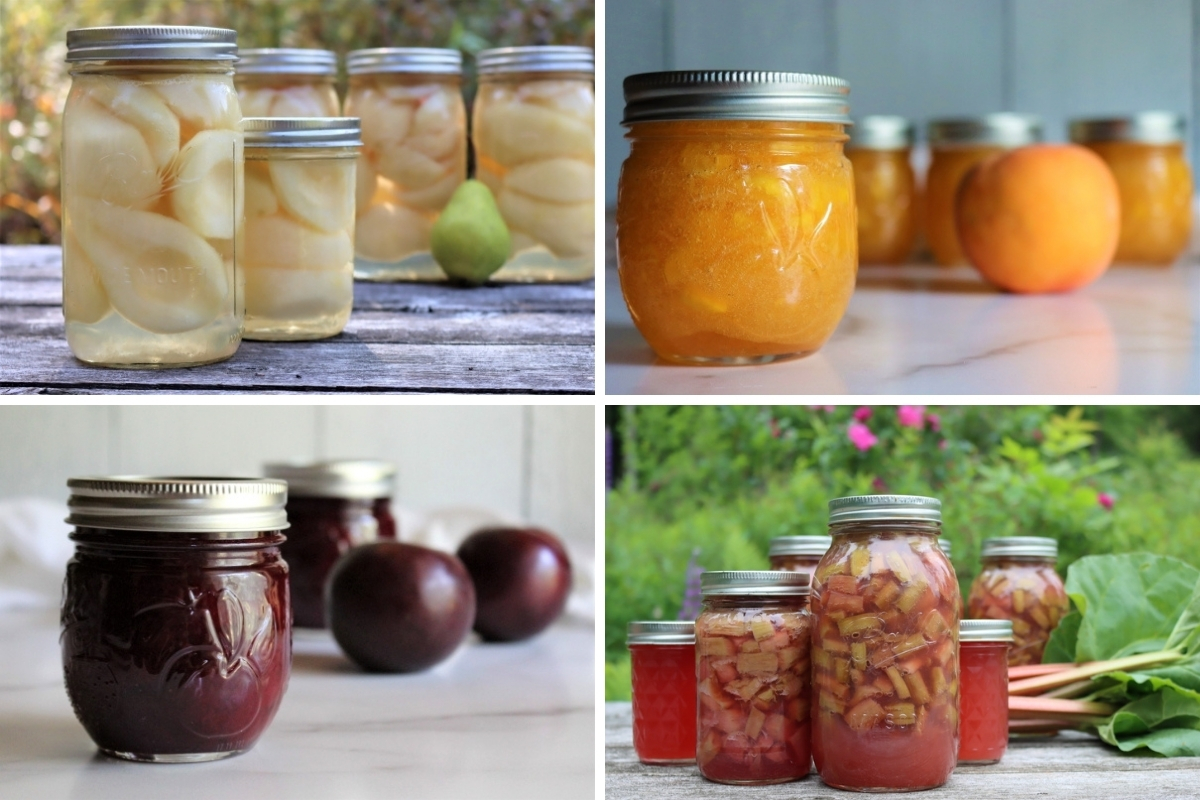
Canning fruit at home is absolutely perfect for beginners, as most types of fruit are approved for water bath canning without any extra ingredients. Sugar is optional, as is lemon juice for most (but not all) fruit canning recipes.
Most fruits may be canned whole, halved, diced, or pureed. Generally, they’re preserved in water, syrup, or fruit juice. What you choose depends on your tastes, and how they’ll be used later.
There’s always the option of jam, jelly, fruit butter, and pie fillings as well.
If you’re not familiar with water bath canning, I’d suggest reading this primer on how to preserve using a water bath canner before making any of these recipes. Beyond that, make sure you have all the right canning supplies on hand as well.
Most types of fruit are acidic enough for canning in a water bath canner, so you won’t need to have a pressure canner on hand. Pressure canners are mostly used for low acid meat canning recipes, soup canning recipes, or vegetable canning recipes.
Safely Canning Fruit
Some fruits are not quite as acidic as others, and they’re considered “borderline” for safe canning. In those cases, the added acidity from lemon juice or citric acid is not optional.
Often lemon juice is added for flavor when canning fruits, as the extra acidity brings out the flavor of the fruits. Sometimes though, it is strictly necessary for canning safety because the fruits are not acidic enough to be safe for canning without added acidity.
Fruits must have a pH below 4.6 to be safe for water bath canning.
Some examples of low acid (or high pH) fruits that are NOT safe for canning without added acidity include:
- Asian Pears (regular pears are fine)
- Bananas
- Cantaloupe (and other Melons)
- Coconut
- Elderberries
- Ripe Mangos (Green mangos are fine)
- Persimmon
- Watermelon
- White Peaches (regular peaches are fine)
If you’re not sure, please check the type of fruit you’re using by looking up the average pH of that particular fruit. Better yet, use a safe, tested fruit canning recipe from a good source.
Preparing Fruit for Canning
Generally, the only thing that’s really necessary for canning fruit is clean, fresh fruit. In most fruit canning recipes, peeling is optional (as with canning apples, peaches, pears, or plums). It results in a better product in the end, but it’s up to you.
Most fruits are canned using what’s called the “hot pack” method, where they’re briefly brought to a simmer to pre-heat them and drive off any air in their tissues so they pack better into canning jars. It’s a bit more work, but often that extra effort on the front end results in a better-finished product.
“Raw Pack” is an option for most fruits as well, where the prepared fruit is just placed into canning jars, and then boiling water, juice, or syrup is poured over the top before the jars are loaded into the canner.
While fruits may be canned in plain water, that tends to result in a washed-out result. I usually can fruit in extra light syrup, which mimics the natural sweetness of the fruit. That keeps the fruit from losing sweetness to the canning liquid, but also doesn’t make them any sweeter either.
You can choose your syrup strength, from extra light to heavy syrup, and there are measurements for canning syrups available here.
Acidic juices like apple, pear, grape, and cranberry are also good canning liquids. They’re a good option if you’re looking for a way to can fruit without added sugar, and you don’t want to have the washed-out fruit that results when you can in plain water.
Beyond canning fruit in a minimally processed way, you can also prepare all manner of fruit canning recipes including jam, jelly, sauce, syrup, pie filling, chutney, and more.
Fruit Canning Recipes
I’ve sorted these canning recipes by type of fruit, and I’ve tried to include as many different variations as possible. While you can always can plain fruit in water or syrup, there are so many more options including fruit butter, pie filling, jam, jelly, compote, and even fruit pickles!
Be aware that not every fruit canning recipe is available on the internet, and sometimes canning books are a more comprehensive source. I have dozens of canning books, but The Complete Book of Home Preserving has the most recipes for canning fruit of every type.
It’s an excellent resource and the first book that should go onto the shelf of any beginning canner.
Apples
Fall apple picking is fun for the whole family, but what do you do with all that fruit? Not everyone has a root cellar, so storage apples aren’t necessarily useful.
Apple canning recipes range from simple apple sauce and canned apple slices to fancy apple jam and even pickled apples!
- Apple Slices
- Apple Pie Filling
- Applesauce
- Apple Butter
- Apple Cider
- Apple Juice
- Apple Jam
- Apple Syrup (Boiled Cider)
- Apple Chutney
- Crabapple Jelly
- Pickled Crabapples
- Pickled Apple Slices
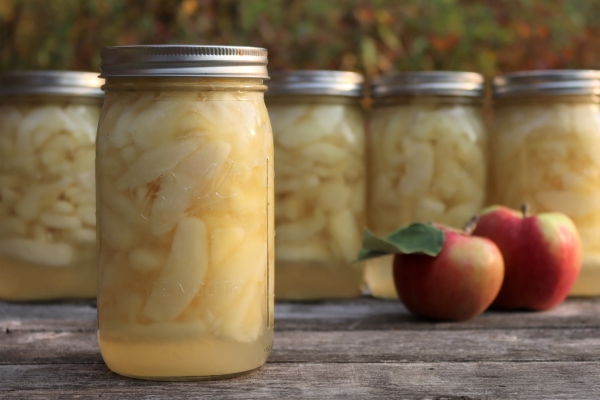
Apricots
There’s a huge apricot tree at my parent’s house in California, and they freeze buckets of fruit every year. This year, my mom asked me for apricot canning recipes so they can save on freezer space.
I sent her plenty of wonderful ways to put an apricot in a canning jar, from whole fruit to silky fruit butter.
- Whole (and half) Apricots
- Apricot Jam
- Apricot Jelly
- Apricot Pie Filling
- Apricot Butter
- Sweet and Sour Pickled Apricots
- Apricot Chutney
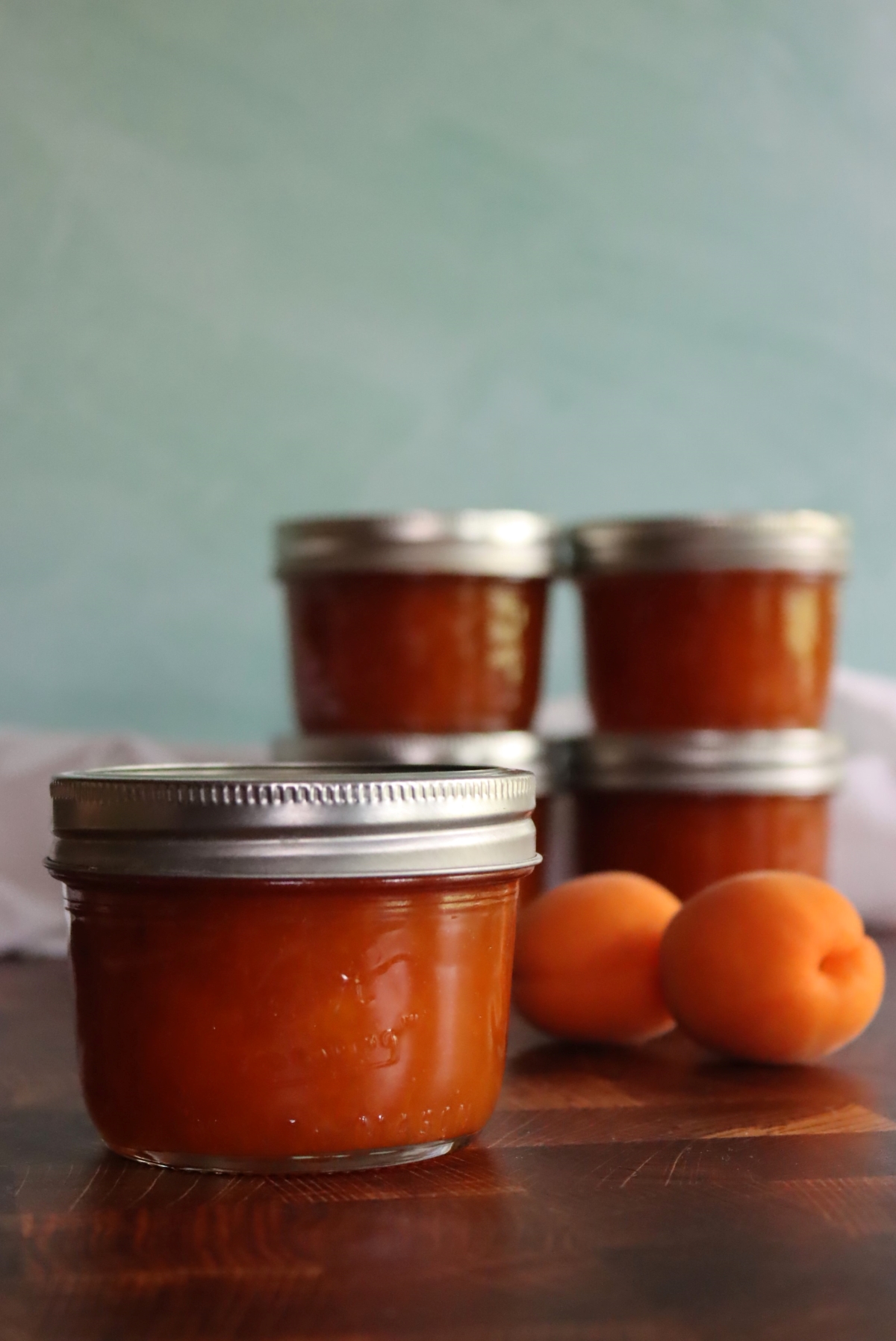
Aronia
Also known as “chokeberries,” Aronia fruits are tart and don’t make the best fresh eating. They’re considered a “superfood” due to their high concentration of antioxidants, so they’re worth eating if you get the chance.
Since they’re so tart, they work exceptionally well in jelly. The fruits don’t have any natural pectin, so you’ll need to add it to get the jelly to set.
(Keep in mind that ChokeBERRIES are different from ChokeCHERRIES, which are a commonly foraged wild edible fruit. I’ll cover chokecherries in a bit, as they’re completely different.)
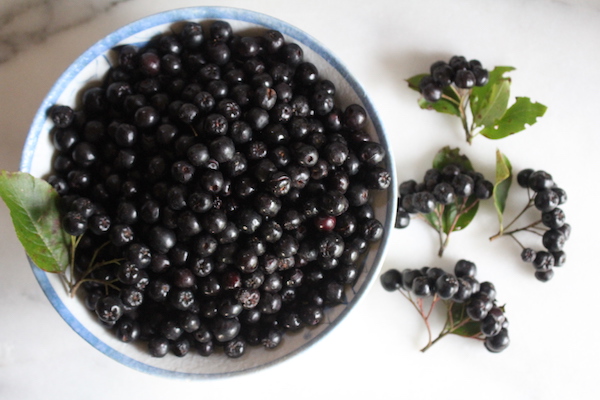
Banana
For the most part, bananas are NOT considered safe for canning. Their pH is too high, averaging right around 5.0 and they have texture issues too. Bananas are so thick they don’t process well in a canner.
That said, there are a couple of tested and approved banana canning recipes. They dilute the bananas with other acidic ingredients, which gets around both the texture and the pH issue.
(I’d encourage you to read more about caning bananas here, where they discuss the specific issues with them and explain which recipes are safe.)
Beautyberries
A novelty for foragers and gardeners alike, beauty berries are a fun edible berry that grows in clusters around the plant’s stems.
They’re only really used for jelly, and you won’t find many beautyberry recipes otherwise.
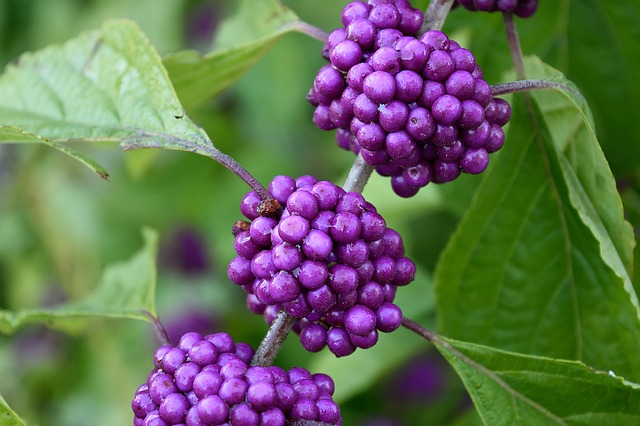
Blackberries
My husband’s favorite preserve is plain blackberry jam, so there’s always plenty of that in our home canning pantry.
Whether you’re growing blackberries or foraging them in the wild, Blackberries can be incredibly productive. Once I’ve put up several batches of jam, there are still buckets of fruit left and I’m always looking for more ways to preserve blackberries.
There’s more than one way to put blackberries in a jar…
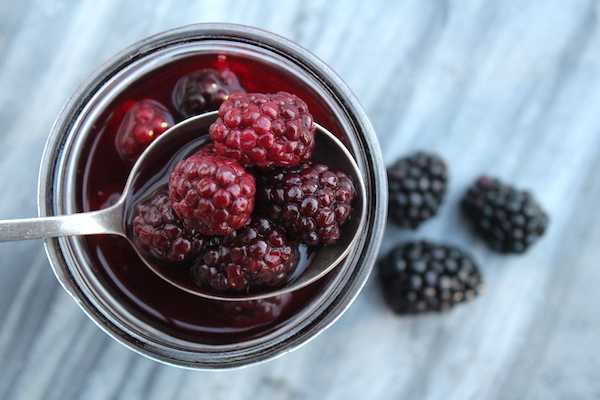
Blackcurrant
Since blackcurrants love the shade and moist soils, they’re right at home on our Vermont homestead. They grow in our woodland garden and produce buckets of fruit in full shade. They actually get burned by the sun if they’re planted in full sun!
These shade-loving fruits are most popular in Britain, where clouds and frequent summer rainstorms give them just what they need. They’re both tart and astringent, so not the best for fresh eating, but they’re perfect for preserves.
I’m always looking for more blackcurrant recipes, and more often than not they end up in a canning jar!
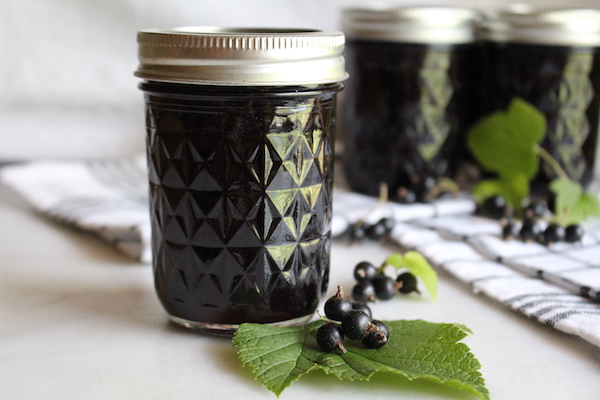
Blueberries
These prolific summer fruits can be frozen, but they take up a lot of freezer space when you harvest in bulk (as we do).
Home-canned blueberries are absolutely delicious, and perfect for muffins. You can also make premade pie filling, as well as jam and jelly.
They’re acidic enough for canning safely, but lemon juice compliments their flavor beautifully and is often added just for flavor. You can skip it in most recipes, except for pie filling where it’s needed to safely can with clear jel (a canning approved thickener).
- Canning Blueberries
- Blueberry Pie Filling (lemon juice not optional)
- Blueberry Jam
- Blueberry Jelly
- Pickled Blueberries
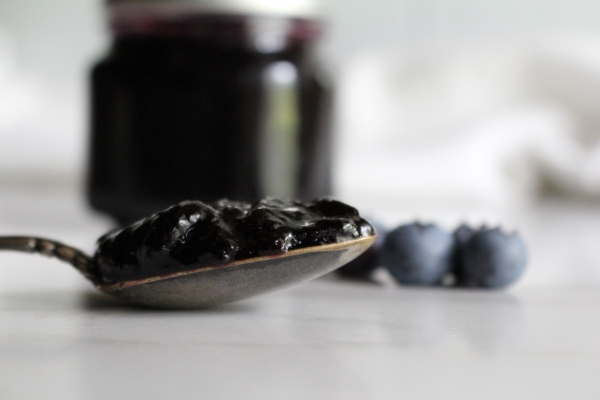
Cantaloupe
I’m sad to say that cantaloupe is one of those fruits that’s just not acidic enough for canning without some extra help from lemon juice or other acidic ingredients.
The National Center for Food Preservation hasn’t tested many specific recipes for canning cantaloupe, but there are a few tested recipes in various canning books and some of those have been published online.
If you find a melon canning recipe without quite a bit of lemon, lime, pineapple or vinegar added then I wouldn’t trust it. Make sure it’s a tested recipe before trying it at home or just make it as a refrigerator recipe.
- Cantaloupe Pickles (NCFP Recipe)
- Salted Cantaloupe Jam (Ball Canning Recipe)
Cherries
We grow tart pie cherries on our zone 4 homestead, and they’re incredibly prolific in the summer months. While they’re not ideal for fresh eating, they make amazing jam and pie.
Sweet cherries are also delicious for canning if you’re in a warmer climate.
They’re all acidic enough for canning, no matter the variety. Since they’re low pectin, the yields will be low (or you’ll need to add boxed pectin) when making jams.
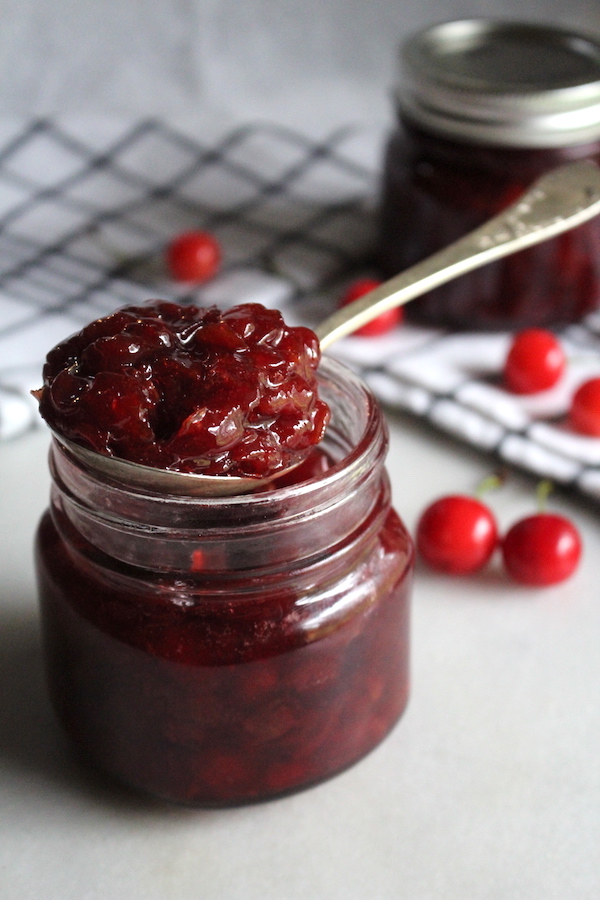
Chokecherry
A wild fruit that’s related to other stone fruits, these little beauties are tart and astringent. They make a lovely jam even if they’re not ideal for fresh eating.
Beyond canning, if you’ve foraged wild chokecherries, I’d suggest reading through these chokecherry recipes to make the most of your harvest.
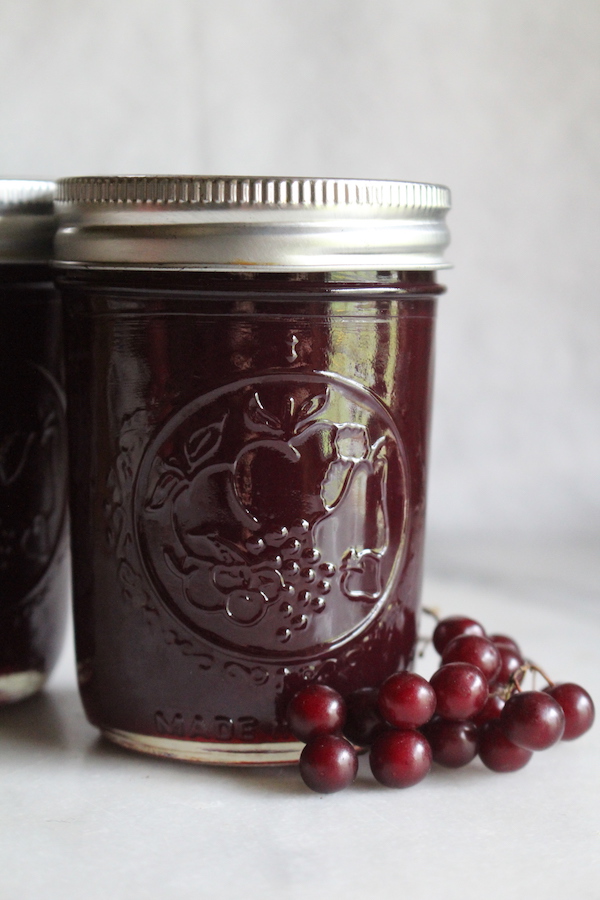
Cornelian Cherry
Popular in Eastern Europe, cornelian cherries are a species of fruiting dogwood. They’re prolific and hardy to zone 4/5, making them a fun addition to a backyard orchard.
We grow them here in Vermont, and once we’ve had our fill of them fresh we’ll add them to homemade jams.
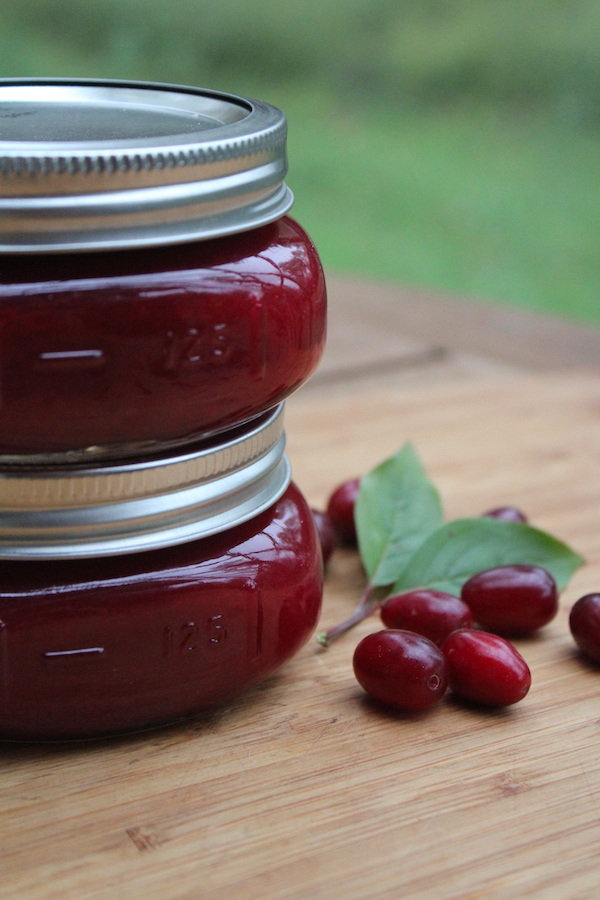
Cranberry
It’s rare that fruits keep you canning into the early winter, but cranberries are the perfect candidate for keeping your canning pot bubbling year-round.
Everyone knows about cranberry sauce, but there are plenty of tasty cranberry canning recipes out there.
- Cranberry Sauce
- Canning Whole Cranberries
- Canning Cranberry Juice
- Christmas Jam
- Cran-Raspberry Jam
- Cranberry Orange Marmalade
- Cranberry Apple Jam
- Cranberry Pear Jam
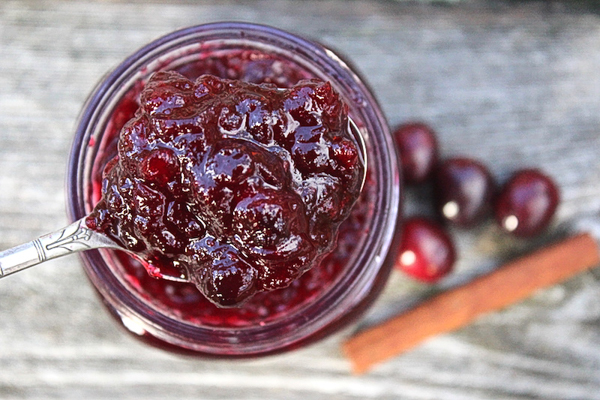
Figs
We’d harvest figs by the bucket full when I was growing up in California, and they’re always a challenge to preserve in season.
They’re perfect for canning, since they’re both sweet and acidic.
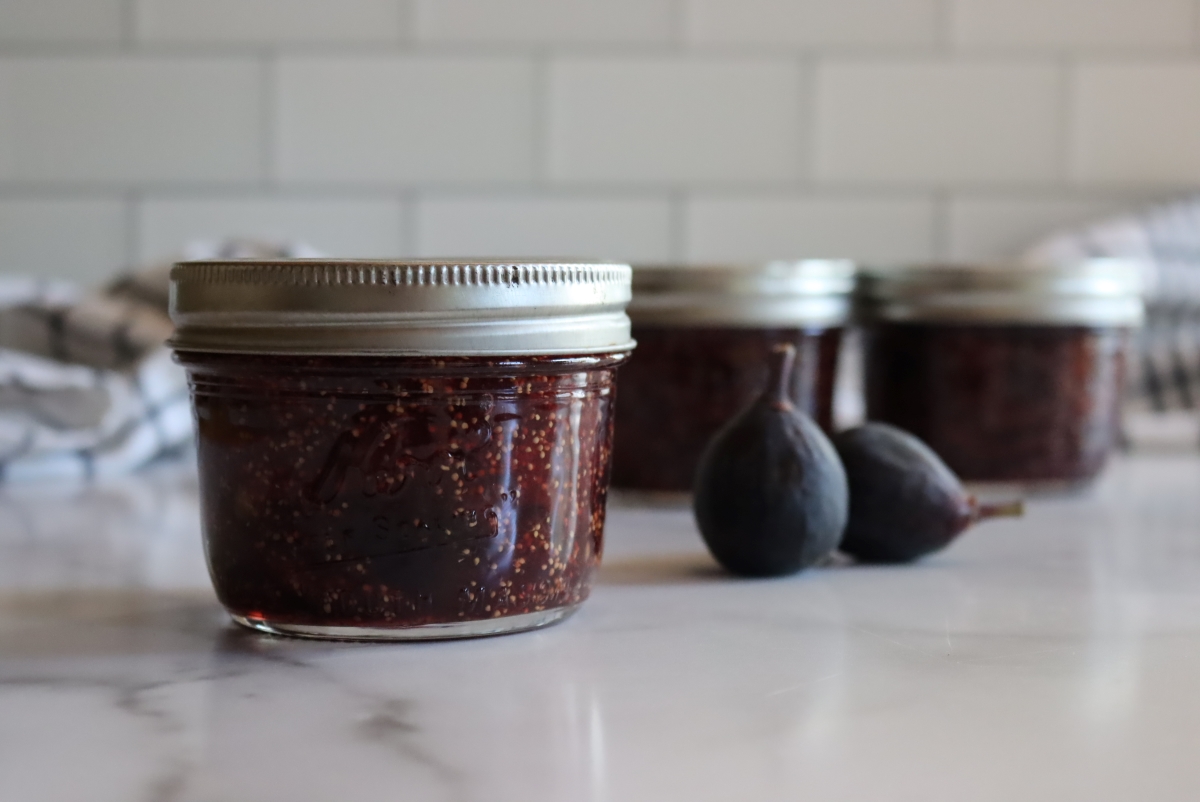
Gooseberry
Gooseberries are a common fruit in the UK, where they thrive in cloudy, wet summers. They also thrive in wet shady spots here in Vermont, and produce buckets of fruit in mid-July.
They’re incredibly pectin rich, so they’re often added to other fruit canning recipes as a pectin source. Since they’re also acidic and tart, they make an incredible jam all on their own too.
- Gooseberry Jam
- Gooseberry Jelly (Coming Soon)
- Canning Gooseberries (Coming Soon)
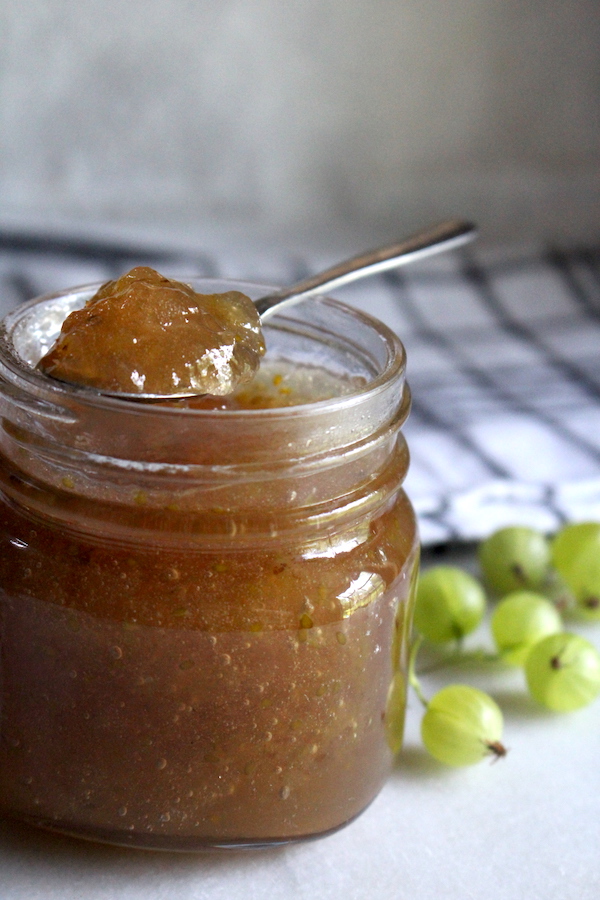
Grapes
Just about everyone knows about grape jelly sandwiches from their childhood. But what about old-fashioned grape jam with peels?
Go a little bit further off the beaten path and you’ll find other fun grape canning recipes, like pickles and pie filling.
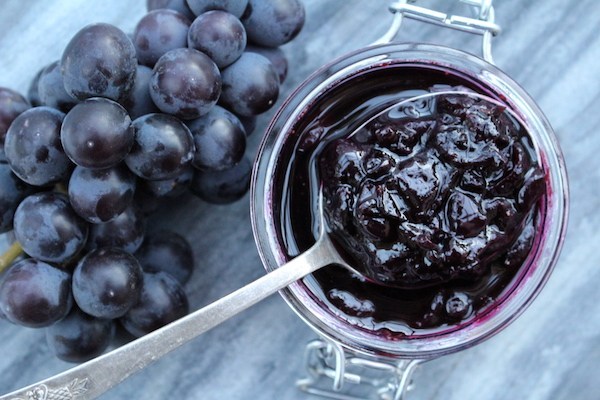
Ground Cherry (Husk Cherry)
A sweet relative of the tomatillo, these little cherries grow on garden plants and yield an abundance of sweet fruits covered in papery husks.
They’re native to Peru and have been common in cottage gardens in the US since the time of the settlers. They’re mentioned in the Little House on the Prarie Books, and occasionally you’ll find them in supermarkets as “poha berry,” “goldenberry” or “cape gooseberry.”
Growing husk cherries is incredibly easy, and they thrive with little care. You’ll be rewarded with a huge crop of these tasty strawberry/pineapple-tasting fruits for use in all manner of husk cherry recipes.
They’re borderline in terms of acidity, so be sure you add lemon juice when canning.
- Ground Cherry Jam (AKA. Husk Cherry Jam)
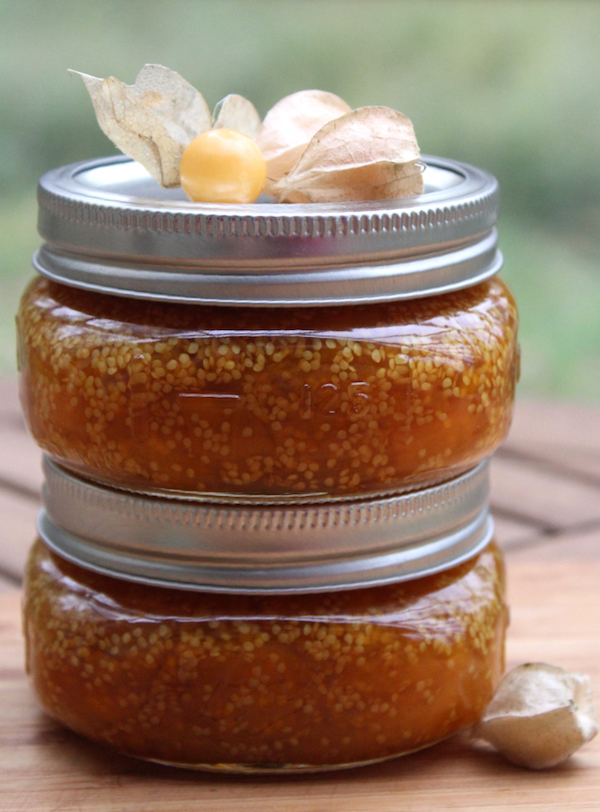
Haskap Berries (or Honeyberries)
An incredibly hardy berry that grows well all the day down to zone 2. They’re popular in Canada and Siberia, as well as Eastern Europe.
They’re becoming more common in the US, since haskaps are easy to grow and more prolific than blueberries. You can sometimes even find them at farmers’ markets, though they don’t transport well.
The soft, fragile fruits taste like a tart mixture of a blueberry and a grape, and they make an incredible jam.
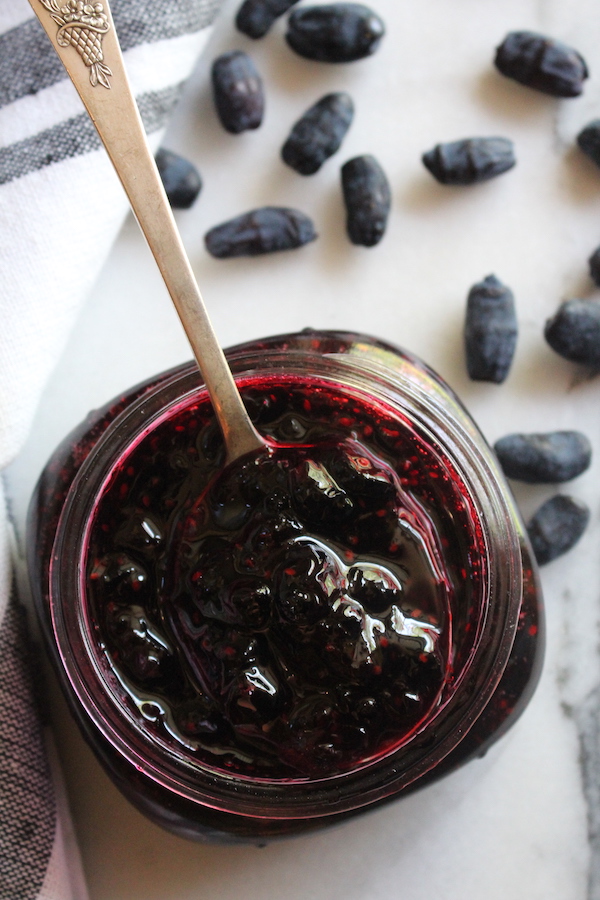
Hawthorn
A relative of the rose, hawthorn trees grow into 15 ft tall trees covered with intensely sharp thorns.
The fruits look a lot like crabapples, but their flavor is different. Close to a cross between crabapples and rose hips, but without much juice.
While they don’t make good fresh eating, they make fine jelly and syrup.
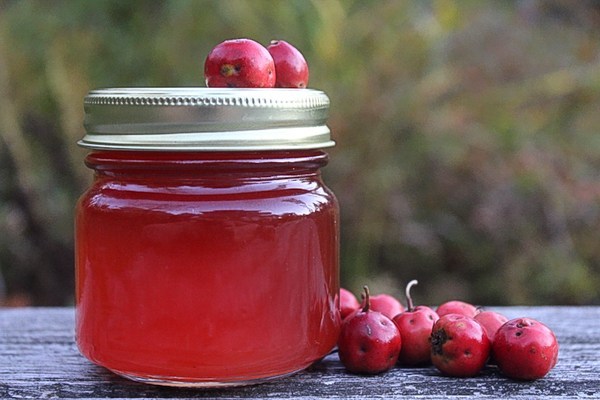
Kiwi
Bright green kiwi fruits are full of natural pectin, and often quite tart, making them ideal for canning. They’re often mixed with other lower pectin fruits to help the jam set.
Since they ripen in winter, they’re a good way to keep your canning pot working all year round.
Hardy Kiwi, also known as kiwi berry, is a relative that’s hardy to zone 3. We grow hardy kiwi for their tasty small fruits, and they offer a taste of the tropics in our otherwise cool climate. They can be used in place of regular kiwis in canning recipes.
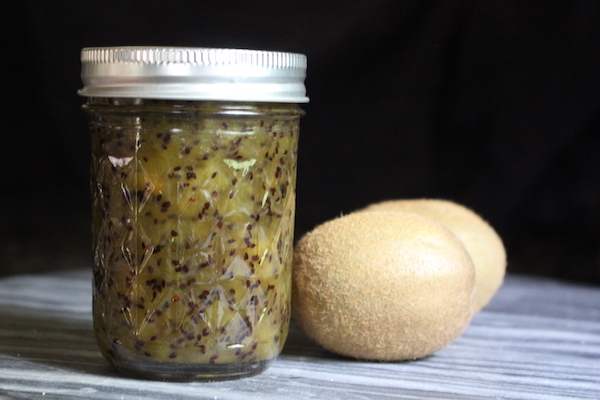
Kumquat
Unlike other citrus, the peels are where the sweetness is found in kumquats. They make a lovely jam, but only if you slice the whole fruit into the mix.
Many kumquats have enough pectin to set naturally, but some may have less based on growing conditions. If you have trouble getting your kumquat jam to set consider adding a pouch of liquid pectin at the end.
I’ve never had that problem, and our kumquat jam always sets beautifully without the boxed stuff.
- Kumquat Jam
- Kumquat Pickles
- Candied Kumquats (Canned using instructions from kumquat jam)
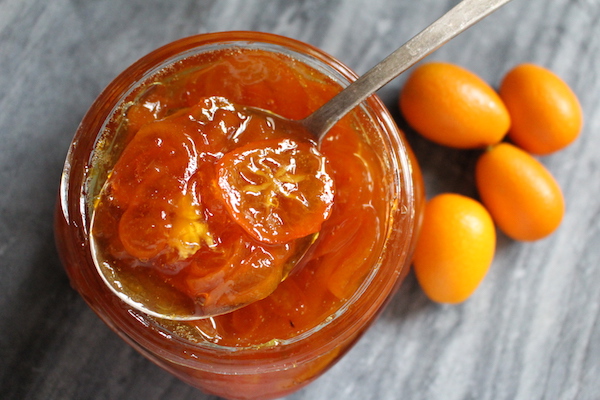
Lemon
The ultimate acidic fruit, lemons also happen to be high in pectin too. That’s one reason lemon juice is added to so many canning recipes, as it helps other lower pectin fruit jams set nicely.
Though it’s often an addition to other fruit canning recipes, lemons are lovely to can on their own as well.
We can lemons in multiple ways. Lemon juice is the obvious solution, but you can also can lemon sections in sugar syrup for tasty lemon drops too.
- Canning Lemons (3 Ways!)
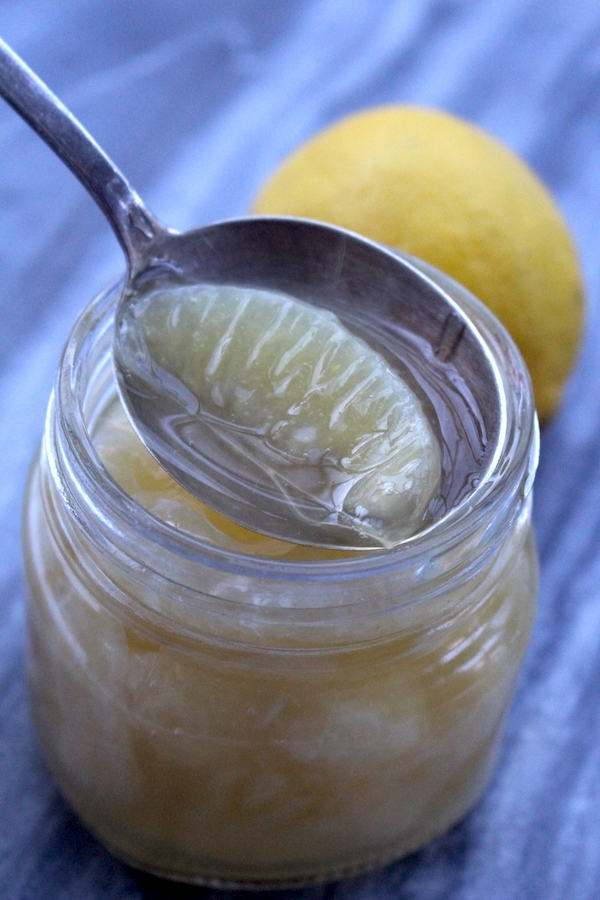
Loquat
Native to China, these fruits are in the rose family. This is one of the few fruits I’ve yet to can, as they’re not readily available in the Northeast.
I’m told they make excellent jam and jelly.
Mango
One of my very favorite fruits, I absolutely love mangoes in all forms. They make a fine mango wine, but an even better mango jam.
Unripe mangoes are acidic enough for canning, but they’re not quite acidic enough when fully ripe. Be sure to use a mango canning recipe that adds a good bit of lemon juice.
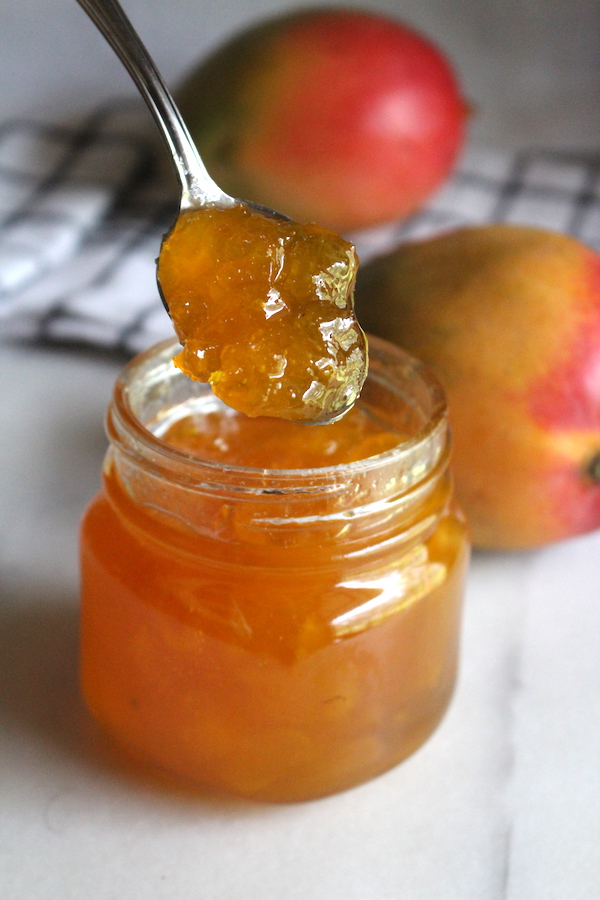
Mulberry
A bit like a blackberry that grows on trees, mulberries are sweet and prolific. Mulberries grow all over the US, so they’re readily available for foragers (or just occasional snacking in public parks).
Many people grow mulberries in their backyard as well, and it’s easy enough to harvest them for home canning recipes. The birds do steal most of the crop, but there is always more available than even the most devoted birds can eat.
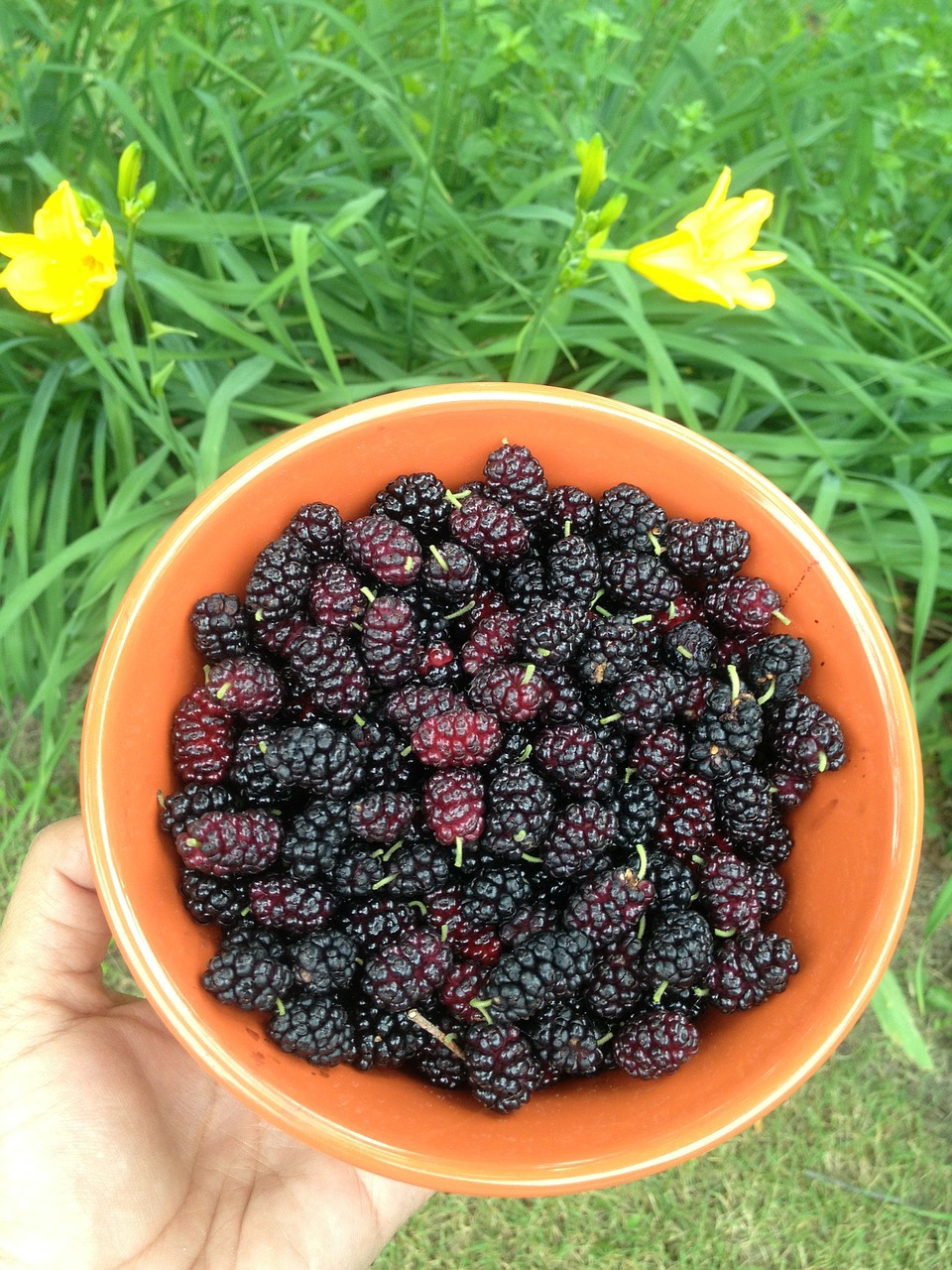
Orange
Oranges are best known to canners as a source of marmalade, but that’s not all they can do.
You can make a delicious spiced orange jam (without the peels), and you can even can whole oranges or orange slices.
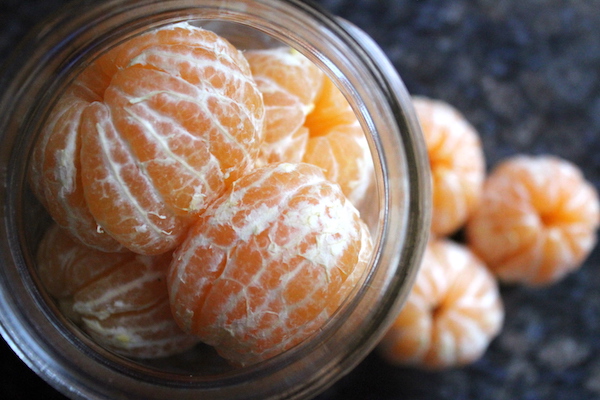
Passionfruit
Tropical-flavored passion fruits are prolific vines that grow along fences in warm climates. I’d pick them on my walk home from school growing up and feast on their rich pulp.
They make an incredible jelly!
Peach
Peaches are the quintessential summer fruit, but these juicy beauties just don’t last long.
If you want cobblers in the wintertime, you’ll need to either can peaches or peach pie filling.
Personally, I do both, and then can peach jam and jelly for good measure!
- Canning Peaches
- Canning Peach Pie Filling
- Classic Peach Jam
- Low Sugar Peach Jam
- Peach Jelly (from peels & pits)
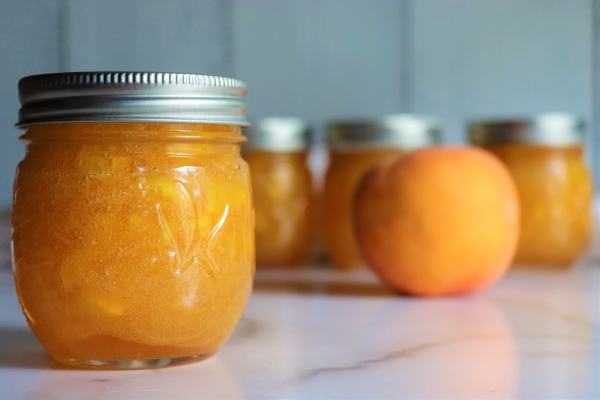
Pears
While in many ways pears are similar to apples, they’re a little bit different when it comes to canning.
Pears tend to hold up to cooking much better, and they do better as canned halves or slices. Their extra resilience to heat also means they’ll need to be pureed if you hope to make pear butter or pear sauce.
Since they don’t fall apart easily, they actually make an incredible chunky pear jam too!
(Whole most pears are perfectly fine for canning, Asian pears aren’t quite acidic enough. There is a tested recipe for canning Asian Pears as halves or slices, but they’re not recommended for jams, jellies, or other preserves.)
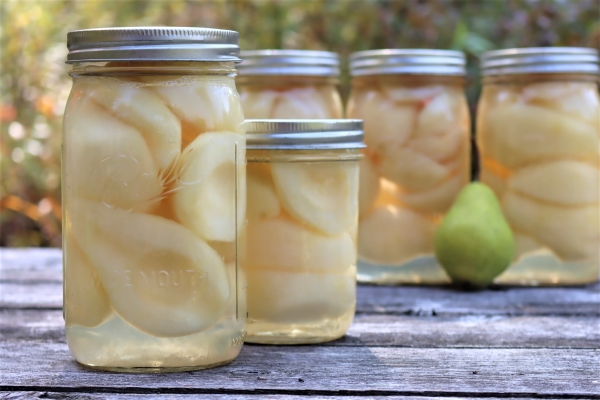
Persimmon
Another fruit that’s not quite acidic enough for canning on its own, persimmons need a bit of lemon juice to make it work.
The lemon juice actually works out wonderfully since they can use the tart flavor to bring out their natural sweetness anyway.
Personally, I think lime juice tastes even better and I tend to use that when making persimmon jam.
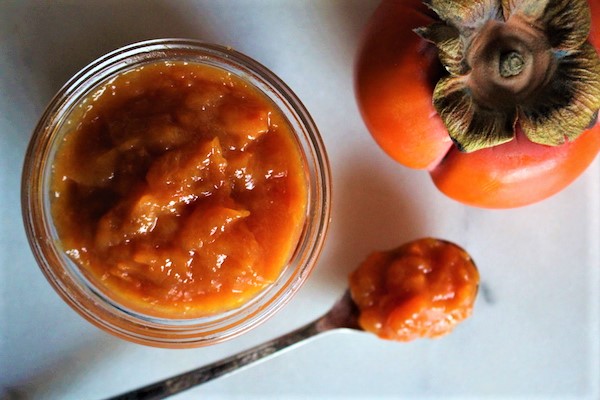
Plum
With their soft texture, plums need to be preserved quickly for peak flavor. If done right, there are few things better than a plum jam, and it’s one of my favorites.
We also can plums alone for winter baking, and they make a lovely upside-down cake.
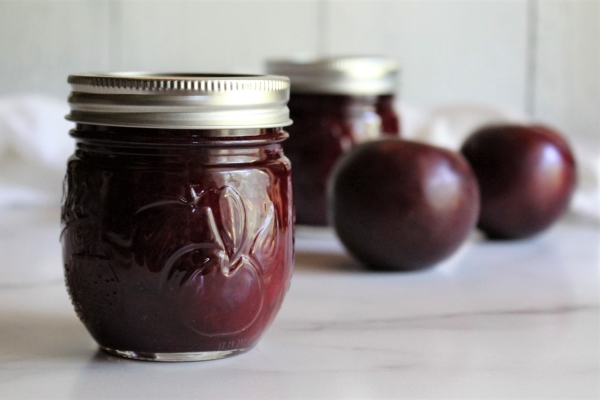
Pomegranate
Alongside kiwis and cranberries, these bright red fruits will keep you canning all winter long. You can make pomegranate jelly with purchased juice, or extract the juice from the arils like any other fruit (simmering and then straining into a jelly bag).
I use the juice to make pomegranate wine too, which is delicious at Christmas time.
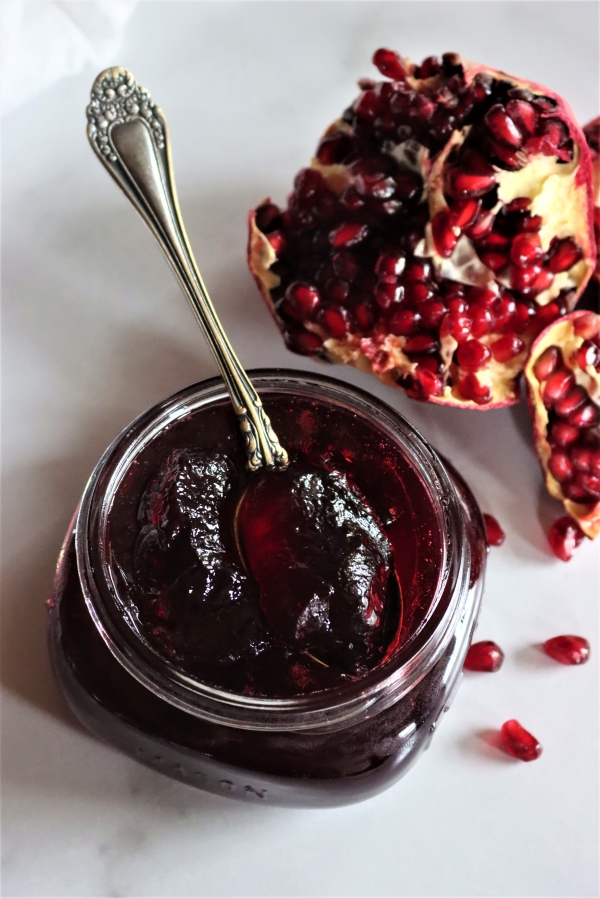
Prickly Pear
A staple of the California landscape, I grew up harvesting prickly pears from my grandfather’s backyard. Their bright flavor makes an incredible jam!
Prickly pear isn’t quite acidic enough for canning on its own, so be sure you use a recipe that adds a good bit of lemon juice.

Quince
While they may look like a hard lumpy pear, don’t let the appearance of quince fool you. They have a taste reminiscent of sweet fragrant roses, but it only comes out after extended cooking.
It takes about 45 minutes to an hour of simmering to bring out the flavor of quince, but then they’ll abruptly turn a bright pink to let you know their rosy sweet flavor is ready.
The extended cook time is perfect for canning recipes, whether you’re canning them in slices, as jelly or jam.
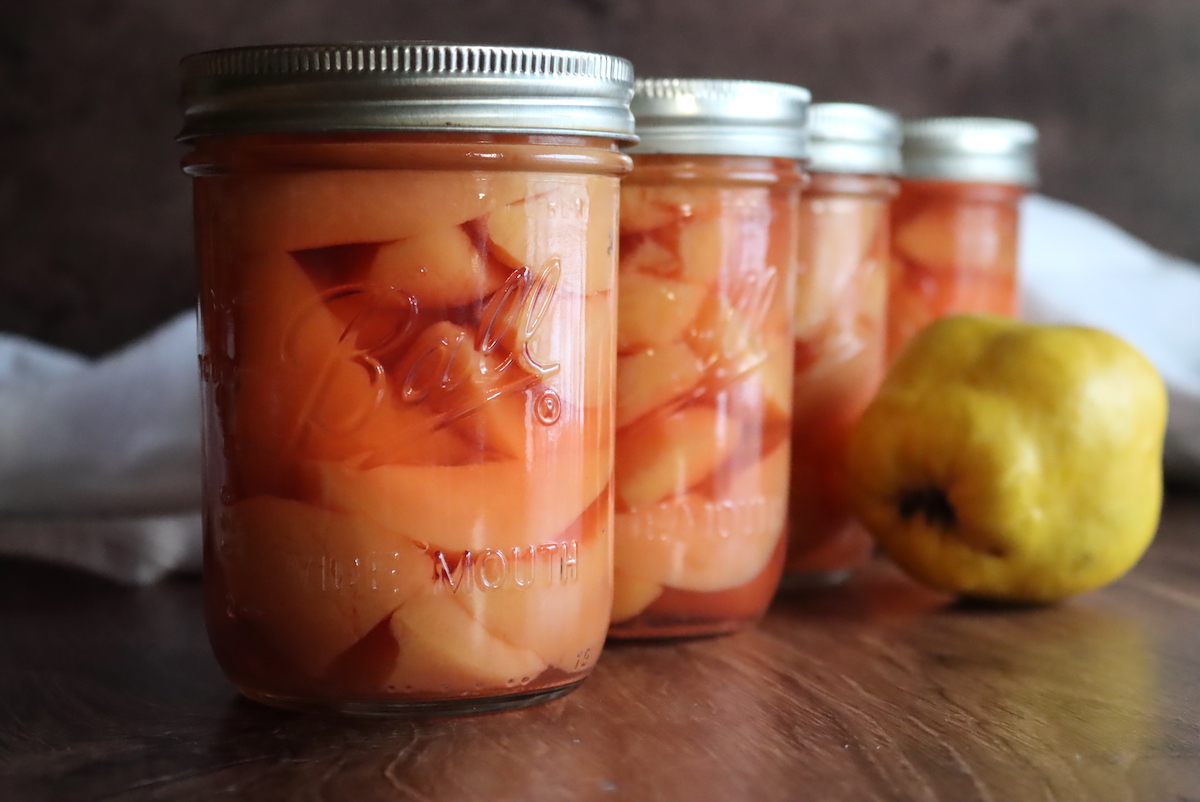
Raspberry (and Black Raspberry)
Fresh summer raspberries don’t keep long, but they make incredible jam, jelly, and more!
Believe it or not, you can even can whole raspberries for winter baking, or for topping yogurt or ice cream. If picked right into the jar they actually hold up pretty well through processing.
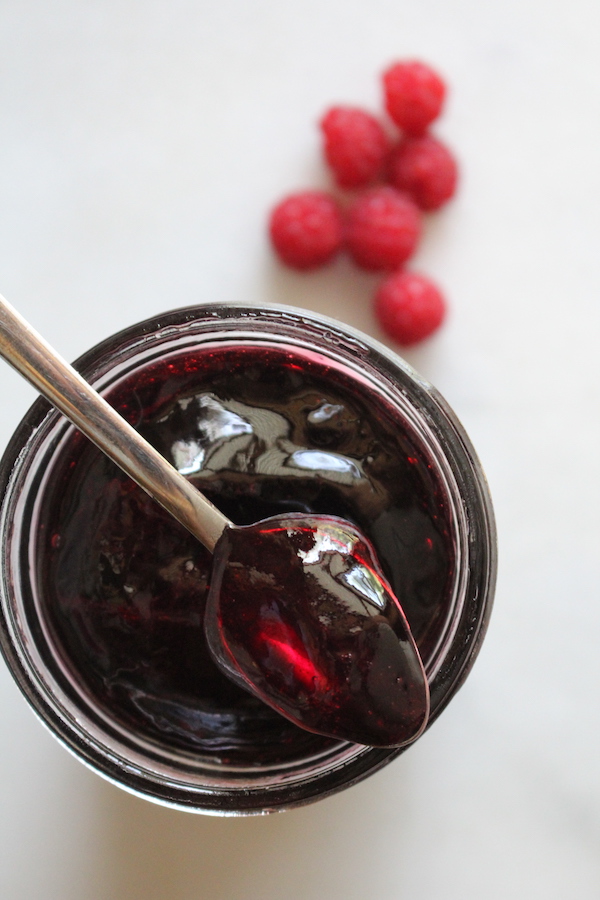
Redcurrant
These pectin-rich fruits are often added to other canning recipes to help them set, and redcurrants work wonderfully in both strawberry and cherry jam. Both of those low-pectin fruits really benefit from the added pectin and the tart acidity of redcurrants.
That said, they’re also absolutely delicious on their own, and we make both redcurrant jelly and chunky-style redcurrant jam for our pantry.
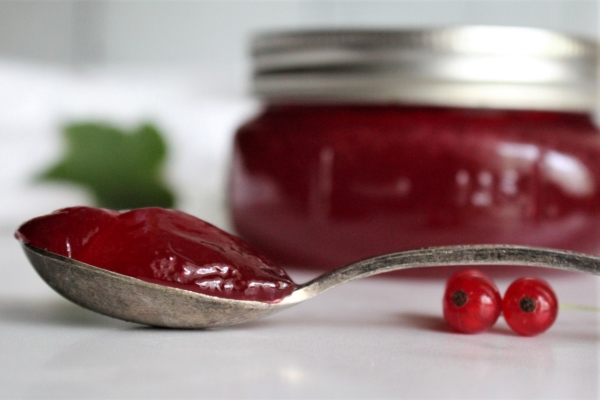
Rhubarb
While it may not technically be a fruit, rhubarb is often treated as a fruit in cooking, and it’s acidic enough for safe water bath canning.
There’s an incredible variety of rhubarb canning recipes out there, from jams and jellies to plain stewed rhubarb and rhubarb pie filling.
- Rhubarb Jam
- Strawberry Rhubarb Jam
- Rhubarb Jelly
- Canning Plain Rhubarb
- Rhubarb Pie Filling
- Strawberry Rhubarb Pie Filling
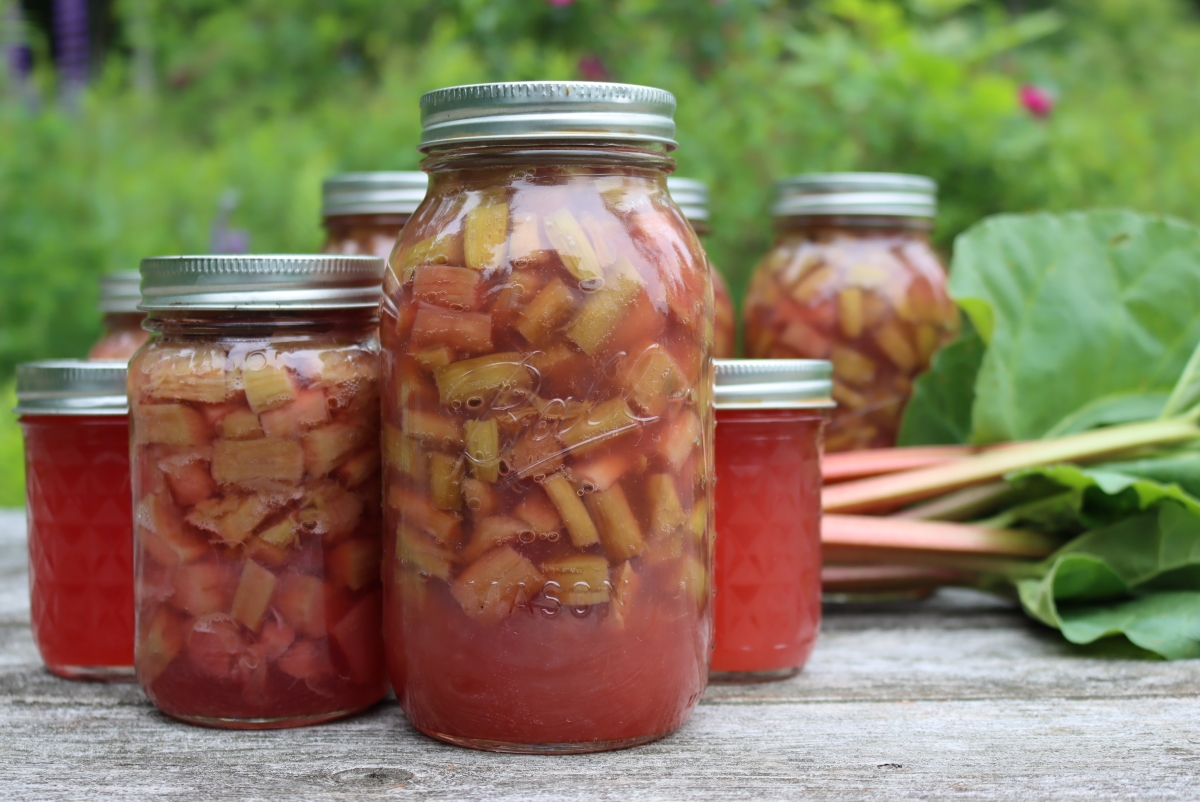
Strawberry
Since strawberries are one of the first prolific berries of spring, I tend to go overboard canning these bright red fruits. My canner’s been on break for a while, and it feels good to re-stock the pantry with strawberry canning recipes.
The standard jams and jellies all apply here, and believe it or not, strawberries actually can up beautifully as whole fruits too!
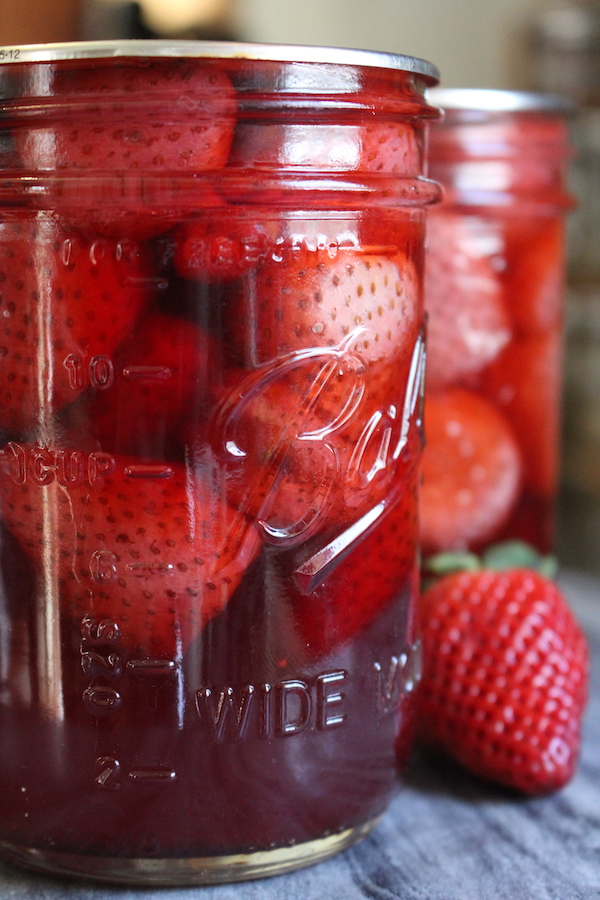
Watermelon
While they seem sweet and acidic, watermelons aren’t actually acidic enough for canning on their own. I’ve yet to find a canning-approved watermelon jelly (or jam) recipe that’s both safe and tastes good.
Since you need to add so much lemon juice for safe canning, it actually makes sense to make something like watermelon lemonade concentrate. Watermelon rind pickles also work, since they have plenty of vinegar.
Fruit Preservation Ideas
Looking for more ways to preserve fruit at home?
- Making Small Batch Wine
- Beginners Guide to Rootcellaring (without a root cellar)
- Freezing Fruit (A to Z Guide)
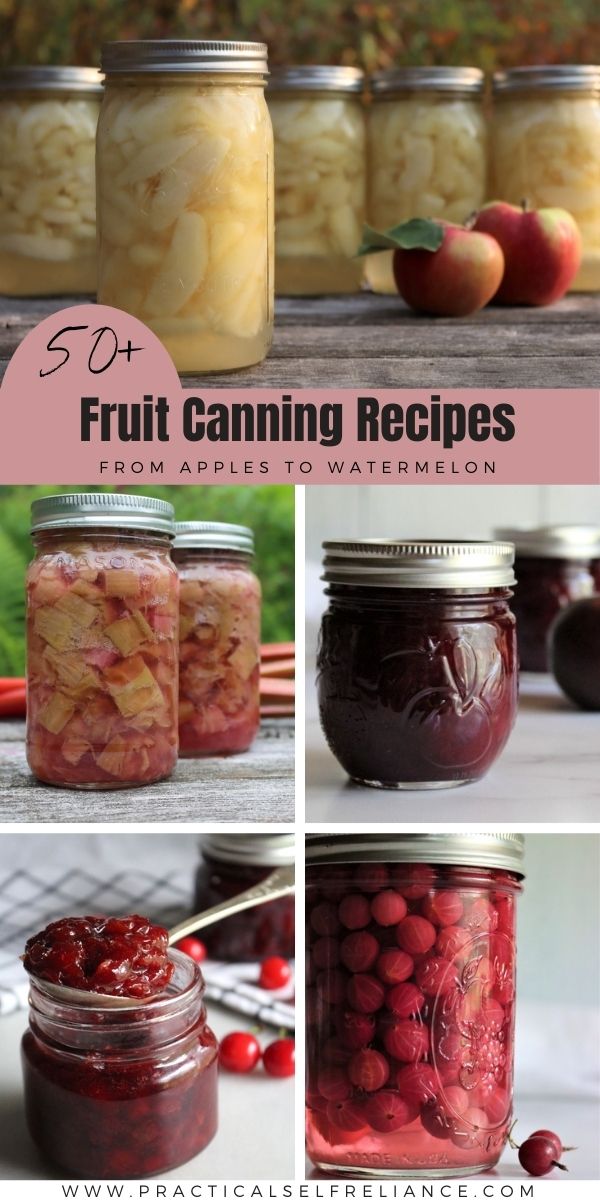
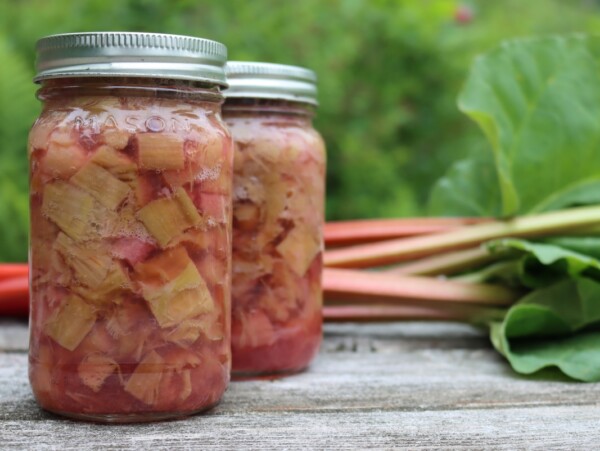
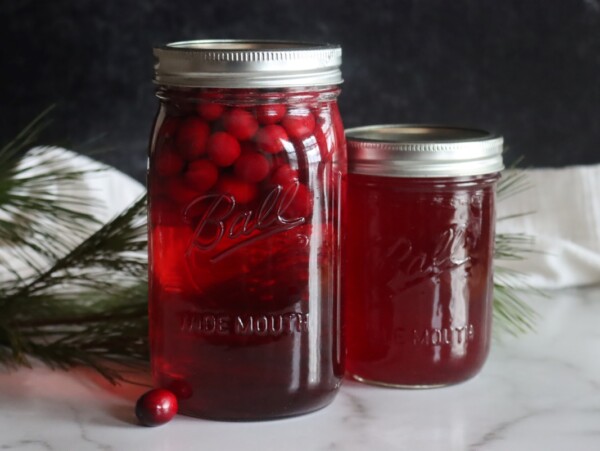
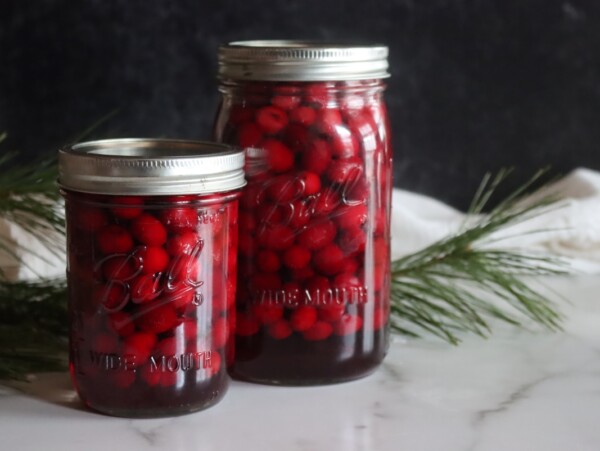
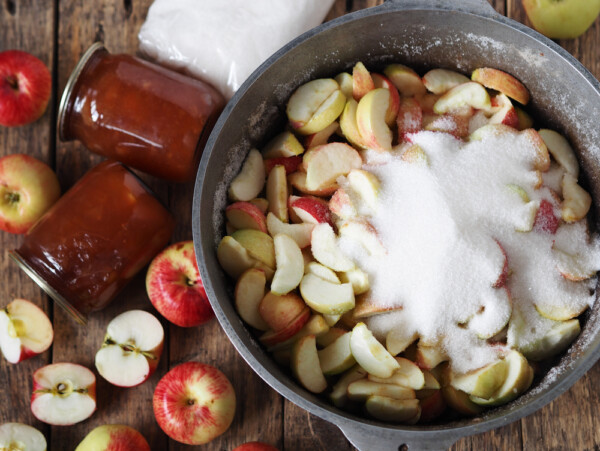
What an excellent site! I live on Vancouver Island in Canada and I’m expanding my permaculture garden each year. From one Persimmon tree, we harvest 80-100lbs of persimmons so I’m happy to see those recipes here. Wondering about Goumi berries …. I cannot find any recipes for them aside from shrubs for cocktails. Do you have any experience making jellies or sauces from Goumi berries?
I don’t personally have any experience making jelly or sauce with them but I know that a lot of people do. You should be able to find some recipes with a quick internet search.
Was reading the watermelon lemonade concentrate recipe, and was wondering if you thought the sugar amount could be safely lowered since the acidity from the lemons should make it safe to can? Just seems like a lot of sugar to me and I know you’re a fan of using less/no sugar if possible.
Yes, you can reduce the sugar, as the thing that’s preserving it here is the acidity not the sugar. You can even skip it if you like, and just do watermelon juice and lemon juice.
I want to can some fresh fruit compote such as apple, peach, cherry. After making the compote would putting it hot into prepared jars be enough or should they still be water bathed?
Yes, you should always water bath if you want it to be shelf stable. Putting it into hot jars will seal the lid but will not properly process the ingredients to be safe.
Thanks for the link
You’re very welcome.
You have wonderful fruit recipes. We are wondering if you have any experience with saskatoons.
Sure do. Here is a whole post written about them.